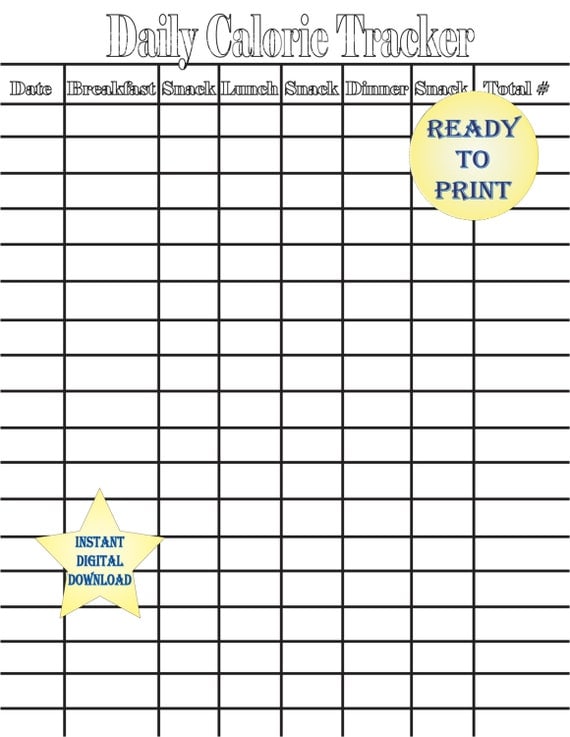

#TEMPLATE FOR A A DAILY CALORIE TRACKER SKIN#
A well-nourished patient has normal skin color and hair texture for their ethnicity, healthy nails, a BMI within normal range according to their height, and appears energetic. The nurse begins the physical examination by making general observations about the patient’s status. The nurse should consider nutritional status while performing a physical examination. Objective assessment data is information derived from direct observation by the nurse and is obtained through inspection, auscultation, and palpation. Ideally, the nurse will recognize subtle cues of impending or actual dysfunction and prevent bigger problems from happening.

Recognizing and identifying risks to nutritional status help the nurse anticipate problems that may arise and identify complications as they occur. Use of nutritional supplements places the patient at risk for excess nutrient absorption and potential toxicity. Use of recreational drugs or alcohol places the patient at risk for insufficient nutrient intake and impaired nutrient absorption. Swallowing impairments place the patient at risk for decreased intake that may be insufficient to meet metabolic demands. For example, a history of anorexia or bulimia will put the patient at risk for vitamin, mineral, and electrolyte disturbances, as well as potential body image disturbances. Subjective information to obtain when completing a nutritional assessment includes age, sex, history of illness or chronic disease, surgeries, dietary intake including a 24-hour diet recall or food diary, food preferences, cultural practices related to diet, normal snack and meal timings, food allergies, special diets, and food shopping or preparation activities.Ī detailed nutritional assessment can also provide important clues for identification of risk factors for nutritional deficits or excesses. While a wealth of subjective information can be obtained through a chart review, it is important to verify this information with either the patient or family member because details may be recorded inaccurately or may have changed over time. Subjective assessment data is obtained by interviewing the patient as a primary source or a family member or caregiver as a secondary source. Subjective assessments include questions regarding normal eating patterns and risk factor identification. Assessment starts with reviewing the patient’s medical record and initiating a patient interview, followed by a physical exam and review of lab and diagnostic test results. AssessmentĪ thorough nutritional assessment provides information about an individual’s nutritional status, as well as risk factors for nutritional imbalances. Now that we have discussed basic nutritional concepts, dietary guidelines, and factors affecting nutritional status, let’s apply the nursing process to this information when caring for patients.


 0 kommentar(er)
0 kommentar(er)
